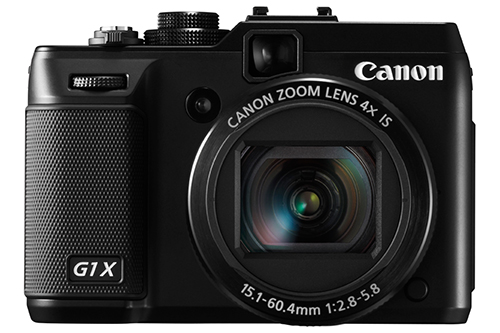Canon has announced their latest model in the G series of high-end compacts, the PowerShot G1 X, and its specifications indicate that it may finally have brought the G series to the place where most have always wished it would be. While the G12 and previous models worked well as the compact camera with manual control, for dSLR users who didn’t want to carry their dSLR with them, they never quite fully lived up to the task because the sensor and lens sizes simply did not allow for dramatic shallow depth of field and good background blurring in many situations.

image courtesy of Canon USA
The G1 X takes the model-line a giant step forward in fulfilling this promise, as it includes a larger 18.7mm x 14mm sensor – not quite as big as an ASP-C sensor in a dSLR, but six times larger than the G12 sensor and larger than the sensors of any of its competitors including the Four-Thirds cameras and the Nikon 1. Combined with its 4x zoom (28-112mm) lens, f/2.8 to f/16 aperture range, low light capabilities, Digic 5 processor allowing for 1.9fps or up to 4.5fps for 6 shots in high speed mode at full image quality, 14-bit RAW file support, and full HD video, this should prove to be a very popular compact for pros and dedicated enthusiasts, as well as to ideal primary camera for enthusiasts and travelers who simply don’t want or need the size, weight, and bulk of a dSLR system. High end digital cameras are rapidly making the move back to smaller and lighter bodies, and the G1 X is going to serve to push this trend along.
The body of the the G1 X is slightly larger than the G12, sitting taller and wider with a larger lens protrusion, but is none-the-less still incredibly compact for the size of the sensor and all else it offers inside its metal body. The camera boasts 14 megapixels, the HS system for excellent low light performance, fast response due to the Digic 5, a 9 point autofocus system plus child-priority face detection, +/-3 EV exposure compensation, built-in neutral density filters, an articulating screen, and even an HDR mode.
However, despite all that it offers, the G1 X is not capable of completely replacing a dSLR. Its shutter response time is likely not instantaneous, its maximum aperture at the telephoto end is only f/5.8 thus limiting the amount of background blurring, its high speed shooting 4.5fps at full image quality is only for 6 shots before the camera needs to stop and process, and its built-in lens does not give the range, focusing speed, and zoom speed and control of an interchangeable lens. But for those willing to work with these compromises, the image quality will likely meet or exceed your needs.
I would like to go into more detail about this promising model, and compare it to the G12, as soon as I learn more about it and have a chance to study the differences. But as it looks now, this just might be the G model that starts to approach the depth of field flexibility and the increased performance that many have longed for with the already-well-regarded high-end compact G series.
Pre-order yours from B and H Photo here! – $799 – expected Feb. 2012
The official Canon press release for the G1 X can be read on their site here.

